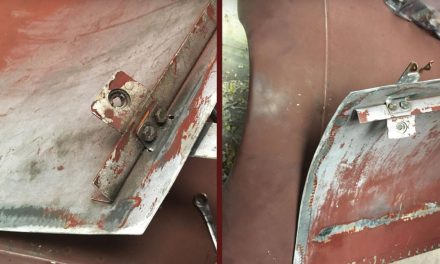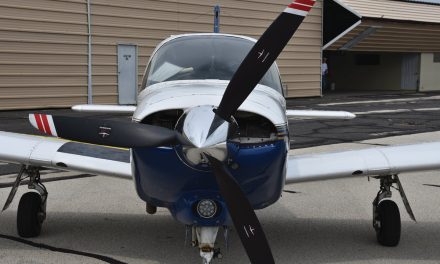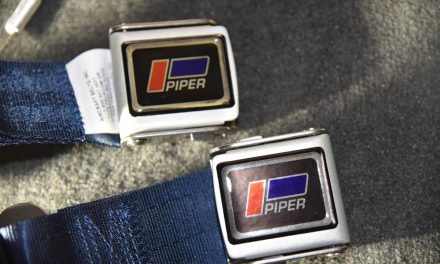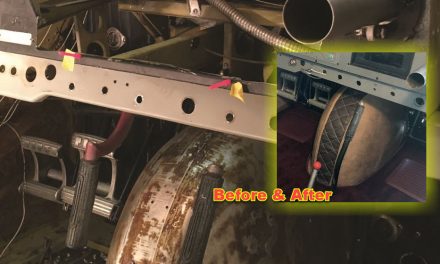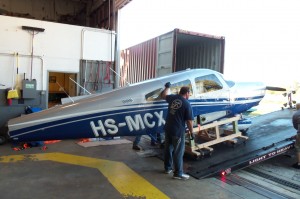 To Bangkok with Love
To Bangkok with Love
MultiCorp Makeover transforms Weary Warrior into a Better-than-New Machine
By Roger Battistoni
Twenty years ago, I was looking to purchase my first aircraft. Already a professional pilot, I looked around the industry assuming I’d find an individual or organization that would take me through the process. After all, I never purchased real estate without an agent or a broker involved—heck, I’d never even done my own taxes! So, why would I purchase a 100k+ asset without the help of a professional? Without luck and rather dismayed to learn that there was no help out there, I set out to help other aircraft buyers, like me, by creating MultiCorp Aviation.
Now in its 15th year, MultiCorp has become one of the largest full-service aircraft acquisition companies in the U.S. and currently helps purchase approximately 4-6 aircraft per month for both domestic and international clients. In addition to managing the entire purchase process, MultiCorp also oversees any and all needed repairs and refurbishments via partnerships with select vendors. We’ve found that as our clients move up in experience and/or budget, we can serve them again and again by helping them sell their “old” aircraft and locating, purchasing, and renovating a replacement to fit their new requirements. In fact, some of our clients are on their 4th different aircraft with us!
Today, international interest and participation in general aviation is growing as various countries loosen airspace restrictions and more and more members of the general public get involved in flying. This is especially true in Southeast Asia where a growing population of pilots is taking to the sky. As this happens, organizations are springing up to support these pilots and provide a venue for members to share their experiences. One such organization, Wings Over Asia (WOA), was started in 2003 as an online blog to share grassroots activities all over Asia. It has since become Asia’s first private aviation social network platform and a dedicated aviation concierge service for private aircraft owners.
About a year ago, WOA contacted MultiCorp to locate an aircraft for their flying club. Their needs: a Piper Warrior with modern avionics, new paint and interior, and air conditioning. Of course, it also had to pass their import restrictions. In this case, budget was particularly important due to all the prerequisite import and export fees and shipping costs. Such added expenses can really add up and make a lot of new aircraft simply unaffordable. Regardless, MultiCorp Aviation was up to the challenge.
First, identifying the right aircraft, in terms of both structure and pedigree, is important in maximizing the investment. For the type of aircraft we were looking for, most were being sold by private owners. Typically, this is not the best situation for us. First of all, most owners significantly overstate the condition of their aircraft. (To be fair, any proud owner thinks their aircraft is a real “cream puff”). Secondly, private owners tend not to have scanned logs or up-to-date photos of the aircraft they’re selling. This is like going on match.com and finding out that the girl you just went out on date with put her high school picture (from 20 years ago) on her profile! Lastly, many owners simply aren’t honest with what is or isn’t working. All this fruitless legwork tends to drive up the cost for our clients—something we try to avoid.
Lesson learned for individual sellers: Please be honest. It’s ALWAYS best to understate and over deliver than to overstate and under deliver.
But, I digress. Contrary to the above, a late-model 1983 Piper Warrior was identified by a rather honest seller. It had a run-out engine, original paint and interior, and was offered at a fair price—the perfect candidate for a “better than new” refurbishment.
First stop – Avionics and Maintenance Upgrades
The engine was sent out to be overhauled to “factory-new” tolerances, as were most of the accessories; new HID Knots-2-U wingtip lights were fitted; SB 1006* was completed (this included removing the fuel tanks and replacing the 30+-year-old hoses); a new upper panel was cut out of aluminum; and all instrument panel lights were replaced by NuLights.
Since this was going to be a simple trainer/club aircraft, it was decided that the avionics be kept simple as well. All existing round dial instruments were sent off to be overhauled and a modest avionics stack, consisting of a Garmin 350 audio panel, a GTN 650, a Garmin 330ES transponder (a Mode S transponder is required in Asia), and a panel-mounted Garmin 795 that tied into the GTN 650 (they don’t have XM weather overseas), were added.
When handling projects for international clients, managing what’s best from an operational and value standpoint is only part of the equation. We also have to understand the requirements of the destination country and the FAA’s requirements for obtaining a Certificate of Export. Having the right paperwork and completing it correctly is critical. In some cases, missing a single serial number can prevent an aircraft from being exported to or imported from another country.
Remember, our client also wanted air conditioning. This isn’t cheap, or in the case of the Warrior, even available from an STC standpoint. Although this particular aircraft came with factory A/C, I wouldn’t really characterize the A/C from Piper as “real” air conditioning. Fortunately, Arctic Air (www.arcticaircooler.com) makes a portable A/C system that fit the bill and with which we have a lot of experience. Having fitted one in my personal aircraft, these systems are not “installed.” Instead, they are portable systems with a self-contained power source. They work amazingly well and putting them in is rather straightforward.
Next up – the Interior
To save money, the middle and lower instrument panels were painted to match the upper panel. All of the windows were replaced with new ¼-inch, tinted gray glass and the interior was completely gutted. All new side panels were created and covered with two-tone, leather-sculpted foam covering. Because replacing all of the plastic can be a rather expensive proposition, we saved money by repairing any damage and covering it with fabric. The fabric also adds some structural rigidity to any existing brittle plastic. The headliner and the vent system vents were also replaced. Next, the seats were torn down to their frames. This was a very important step as two of the seat back supports were cracked and needed repair. All new foam was used to build the seats back up and new, two-tone leather covered the seats. An all new, 10-year, anti-stain/anti-wear carpet topped off the interior refurbishment.
On to Bodywork and Paint
MultiCorp’s interior designers worked with Scheme Designers to come up with a custom scheme that worked well, looked great, and, most importantly, met the customer’s specifications. As part of our painting process, all control surfaces were removed before all the old paint was stripped. Next, any dings and dents were repaired and almost all of the plastic fairings were replaced. (Unlike fiberglass parts, the original plastic horizontal stabilizer tips and the dorsal fins almost always have to be replaced). As for color, painting a plane nearly all silver is rather difficult. Silver has less pigment so it requires a lot more paint and, thus, it’s more expensive.
The Test Flight and Pre-ship Preparations
At last, the Warrior was ready for inspection and a test flight to make sure everything worked “as advertised” before it was sent off to export where it was completely dismantled.
“Whoa, wait a minute. You mean the finished plane is taken apart!?!” That’s right—after the FAA-designated inspector signs the Certificate of Export the plane must be disassembled for shipment. Sure, in some cases, a plane can be flown to its new home overseas. However, I’m sure there aren’t too many people out there who’d want to ferry a Warrior from Florida to Asia! Outside of such a rare circumstance, the aircraft must be fit into a standard shipping container. This means that the wings (and consequently most of the interior) must be removed. The horizontal stabilizer and vertical tail are also removed, as is the landing gear, before everything is packaged up in the container. It’s rather unbelievable that all of the parts fit in the container, but they do. The shipping company then picks up the container and 55 days later it arrives on the shores of Bangkok. As usual, there were customs delays along the way, but after a few weeks the plane is re-assembled and ready to fly.
MultiCorp Aviation was proud to be part of the purchase process for Wings Over Asia. As someone who has lived a good part of his life overseas, seeing general aviation expand into these areas is absolutely amazing—and being part of it is even more amazing.
*As a SB, this is not something that has to be completed at the time of an annual.

